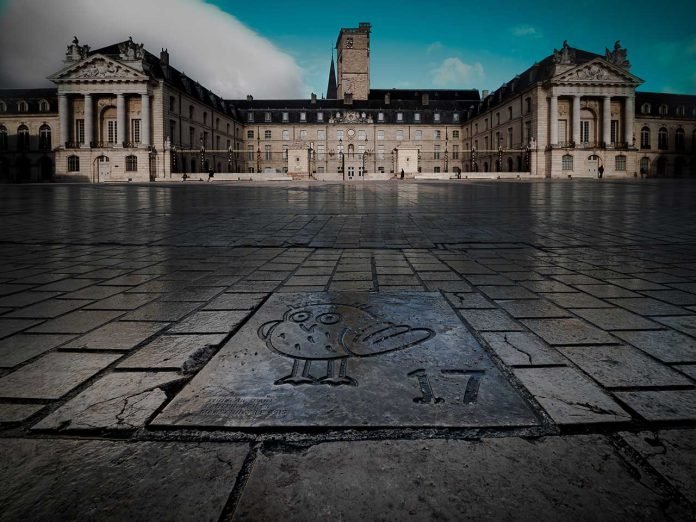While the entire museum is a treasure trove of art, the tombs of the Dukes of Burgundy are a must-see. These grand funerary monuments, intricately carved and remarkably well-preserved, provide a significant historical link to the Burgundian dynasty that once ruled this region. They are not only artistic masterpieces but are also deeply intertwined with the history of Dijon and the wider Burgundy area.
Location Nestled in the heart of Dijon at 1 Rue Rameau, 21000, the museum, placed with Palais des Ducs de Bourgogne, is easily accessible and is a key stop for any visitor to this historic French city.
Tips for Visitors: When planning your visit to the Musée des Beaux-Arts de Dijon, consider setting aside at least half a day to fully immerse yourself in what the museum has to offer. The museum is generally less crowded during weekdays, especially in the morning. Don’t forget to check the museum’s website for special exhibitions, guided tours, and educational programs that might align with your visit. The museum is also conveniently located near other historic sites and fine dining establishments, making it easy to plan a full day of exploration in Dijon.
Historic Significance
Established in 1787, this museum stands second only to the Louvre in terms of its age and grandeur. What makes it particularly unique is its location inside the Palais des Ducs de Bourgogne, a stunning ducal palace that served as the headquarters of the Burgundy State in the 15th century.
The Musée des Beaux-Arts de Dijon holds a significant place in French art history as one of the oldest museums in the country. Its establishment in 1787 reflects the long-standing tradition of art collection and patronage in France. The museum’s historical significance goes beyond its age. It is a testament to the cultural heritage and artistic legacy of Dijon and the Burgundy region. It stands as a reminder of the region’s past as a center of power and artistic patronage during the Duchy of Burgundy.
Palace Setting
The museum’s location within the Palais des Ducs de Bourgogne adds a captivating dimension to the visitor experience. The palace itself is a remarkable architectural gem, showcasing the splendor and opulence of the ducal court in the 15th century. As visitors explore the museum’s artworks, they also have the opportunity to wander through grand halls and rooms that were once the center of political and cultural life in Burgundy. This unique combination of art and history creates a truly immersive experience.
Renovation and Modernization
The 2013 renovations of the Musée des Beaux-Arts de Dijon have transformed the museum into a modern and visitor-friendly institution. The updates have enhanced the overall experience for visitors of all backgrounds and interests.The modernized exhibition spaces provide a more comfortable and engaging environment for viewing the artworks. The improved accessibility ensures that everyone can enjoy and appreciate the collection. Revamped displays showcase the artworks in a fresh and dynamic way, utilizing modern exhibition techniques and technologies. This approach not only preserves the historical significance of the artworks but also makes them more accessible and relatable to contemporary audiences.
The Collection
Spanning from Antiquity to the present day, the Musée des Beaux-Arts de Dijon boasts a collection that is both vast and diverse. Visitors can expect to immerse themselves in a wide variety of artworks that encompass various artistic periods, styles, and mediums. Here’s an expanded description of what you can find at the museum:
- Classical Paintings: The museum houses a remarkable collection of classical paintings, showcasing the evolution of painting techniques and styles throughout history. Visitors can admire works by renowned artists such as Veronese, Titian, Rubens, and Poussin, among others. These paintings capture different themes, from religious and mythological narratives to portraits and landscapes.
- Intricate Sculptures: Sculptures also play a significant role in the museum’s collection. From ancient Greek and Roman sculptures to medieval and Renaissance masterpieces, visitors can appreciate the skill and artistry involved in creating these three-dimensional works. The sculptures range from small, delicate pieces to larger, more imposing figures.
- Decorative Arts: The Musée des Beaux-Arts de Dijon showcases a wide array of decorative arts, including furniture, ceramics, textiles, and silverware. These objects demonstrate the craftsmanship and artistic expression of different time periods, providing insights into the decorative styles and tastes of their respective eras.
- Renowned Masterpieces: The museum proudly displays renowned masterpieces by famous artists. Visitors can marvel at iconic works such as “The Last Judgment” by Rogier van der Weyden, “The Madonna of Chancellor Rolin” by Jan van Eyck, and “The Three Graces” by Jean-Baptiste Carpeaux. These celebrated artworks exemplify the skill, creativity, and historical significance of the artists who created them. (Please note art works on display do change so please check ahead if you are going to see a particualr piece of art)
- Lesser-Known Works: Alongside the well-known masterpieces, the Musée des Beaux-Arts de Dijon also showcases lesser-known works by both established and emerging artists. This diversity allows visitors to discover hidden gems and explore different artistic movements and perspectives. It provides an opportunity to delve into the lesser-explored aspects of art history.
The Musée des Beaux-Arts de Dijon offers a comprehensive and captivating journey through the world of art. With its vast and diverse collection, visitors can appreciate the beauty, creativity, and cultural significance of artworks spanning centuries, creating a rich tapestry of art history to explore and enjoy.
Official Musée des Beaux-Arts de Dijon Website

















